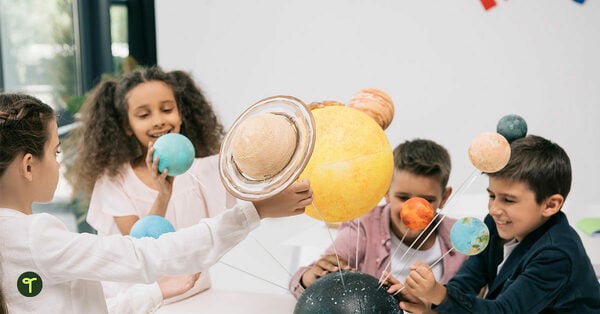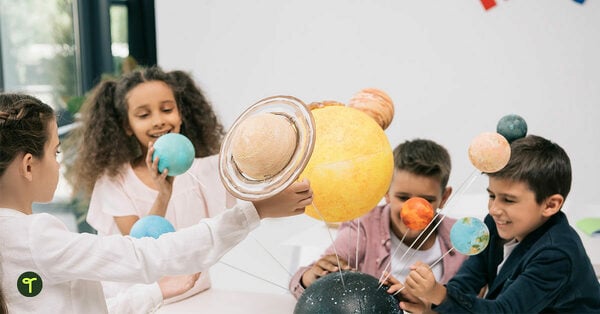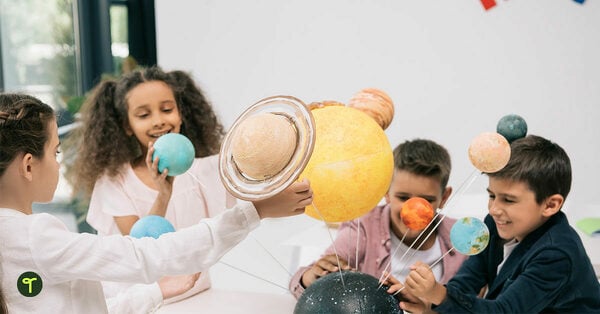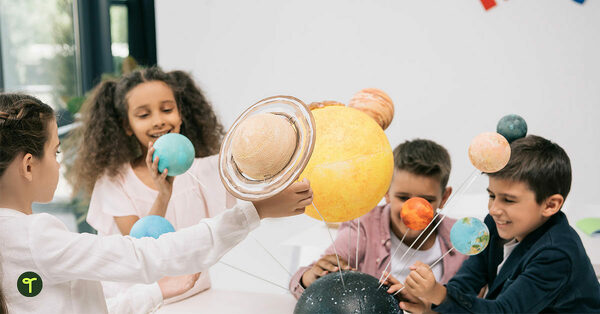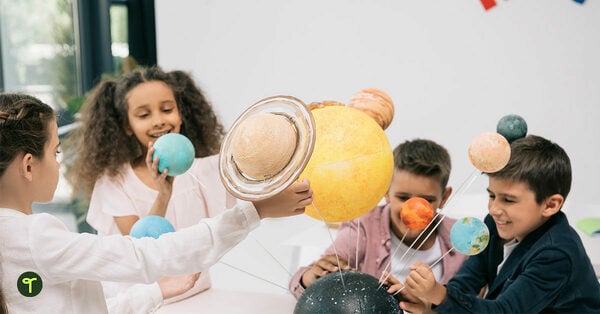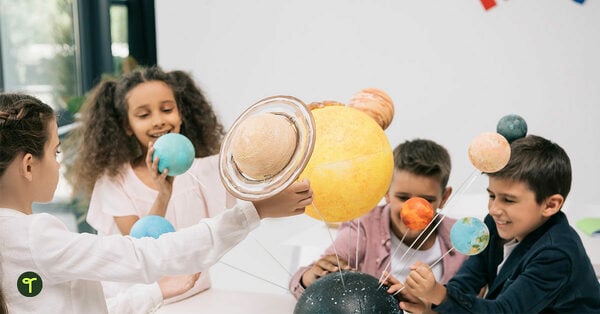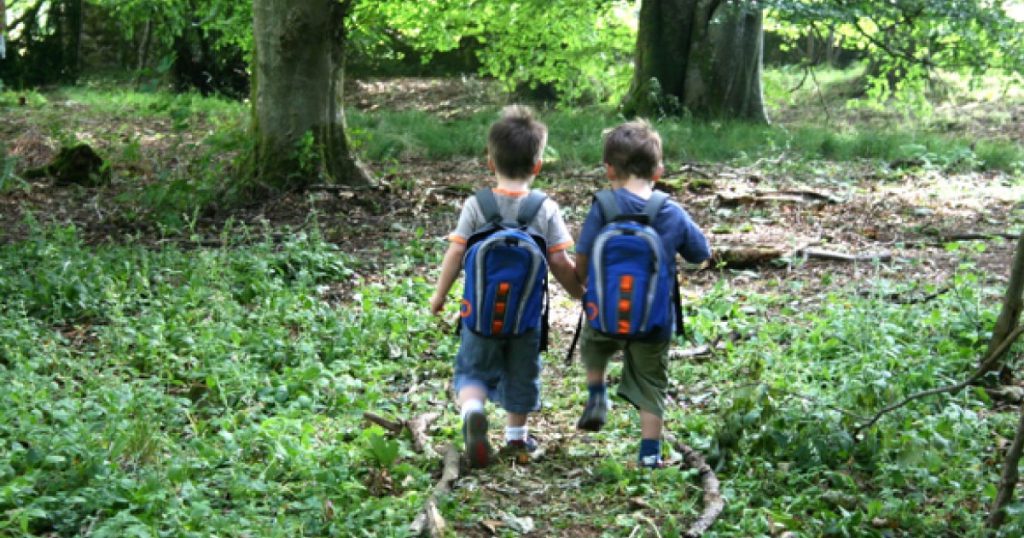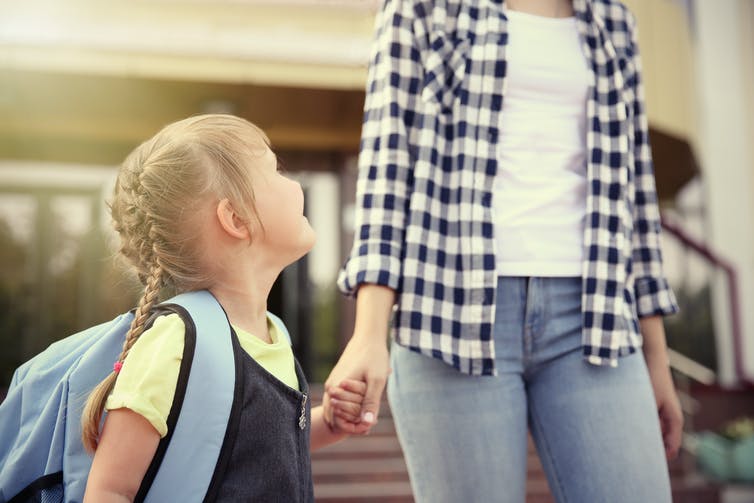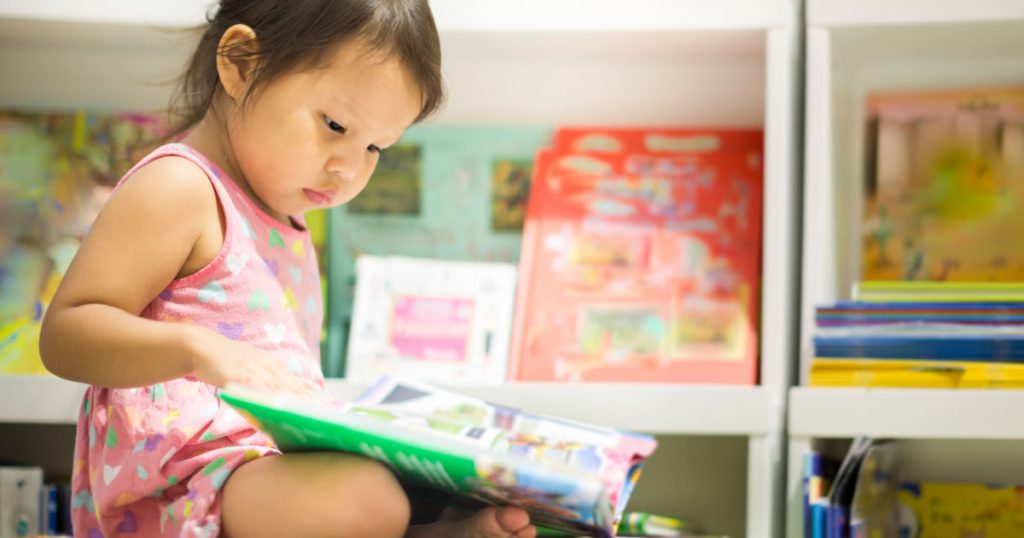There’s something about space that can’t help but fascinate young learners. Maybe it’s the fact that there’s so little known about the universe, or maybe it’s just knowing that there’s something that’s so much bigger than even the grown-ups in your life? Either way, astronomy units are often some of students’ favorites which makes teaching kids about space a blast for teachers (yeah, we had to go there).
Planning to teach your class about space? There’s no need to go into orbit in search of engaging teaching resources! Teach Starter has everything you need in our Earth and Space Sciences resource collection.
Inspire Students About Space Beyond:
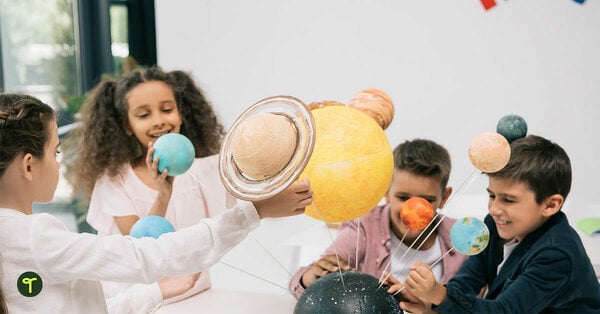
Encourage your kids to learn all about Dr Mae Jemison – engineer, physician, and NASA astronaut. She became the first Black woman to travel into space in 1992, and she’s featured in our series of profiles highlighting inspirational women. Your students can practice writing about what their lives would be like if they followed in Jemison’s space suit steps with the If I Were an Astronaut writing prompt.
Astronaut training continues for younger kids with a connect-the-dots that lets them practice counting by 5s all the way up to the 400s, only to reveal one of these special people who head off on NASA’s rockets into space.
Or allow your students to grab their crayons and markers to practice patterns while putting together their very own funky astronaut craft.
Space-worthy STEM Fun in the Early Years!
Looking for a science lesson? Use our Rocket Template to try this fun rocket activity, exploring motion, force, and energy:
Gather Materials
- Rocket template
- Colored pencils or pens
- Scissors
- Tape
- Thick straws
- Thin straws
- Fun-Tak
Rocket Template Procedure
- Color the rocket template and cut it out.
- Cut a piece of thicker straw half the length of the rocket shape.
- Use tape to attach the thicker straw to the back of the rocket, and block the top of the straw with a blob of sticky tack.
- Put the thin straw inside the rocket straw.
- Blow into the straw and watch your rocket take off!
- Try variables like different directions, varied speeds, folding the rockets, indoor vs outdoor use.
Play-Based Small World Activity
Sensory play helps young learners develop their motor skills and make important connections in the brain, so you’ll want to leave space for a moon landing sensory table in your plans for pre-K and kindergarten kiddos. With make-your-own moon sand, foil balls, and of course astronauts, it’s well … out of this world. For all the details and to find the recipe for magic sand, check out How to Make a Space-themed Invitation to Play.
Martian-Approved Math Activities
Since we’re talking about space, it makes sense to start in math class, doesn’t it? For little ones just learning to count, try this Rocket Dot-to-Dot for a bit of fun with one-digit numbers! As they connect the dots, they’ll reveal a very special space-themed picture.
Fifth and sixth graders may be beyond the connect-the-dots stage, but we won’t let them get lost in space! Have your students hone their location and direction skills with our Rocket Coordinates activity, beefing up their plotting skills while also revealing a certain popular space object.
Our Fact Family Rocket Blast Off is a great way to reinforce multiplication and division relationships. Check out the various versions, and pick the right one for your classroom:
Space-Themed Vocabulary Activities
Houston, we have some space words for you! Students in the upper grades can dive into a word search stocked with three- and four-syllable terms from beyond the Earth’s atmosphere. We’ve put a twist in, though! There are no planets in this word search, so they’ll learn about more than just Mars and Venus!
Or introduce your younger students to 90 brand-new words from space with a space-themed word wall that will teach take them on a trip from black hole to vernal equinox and back again! Print and post around your classroom for an immersive planetarium experience.
Universal Writing Prompts

Once they’ve got the vocabulary down, it’s time to put it to good use. This range of narrative writing prompts contains these engaging space-themed posters perfect for your class. The prompt posters could be used as stimuli for quick-write lessons throughout your space lesson.
For older children, teach the critical skill of inferring with the Ducks in Space Inference Scenario Poster and accompanying worksheet. Inferring is a valuable skill, and these quirky quackers will have students examining the scenario and answering a series of related questions. It also asks students to decide whether they have used inference or prediction in giving their answers.
Stellar Space Crusade Game
Why not use our blank Space Crusade Board Game template to create an enjoyable activity which aligns with your planning? You can mix it up depending on the year level!
Create a Creature from Planet Xubos
This exciting extraterrestrial activity requires students to research the fictitious planet of Xubos. The fact sheet provides students with information on the planet and its main habitats.
You may like to use this resource with the Xubosian Creature Report and the Create a Creature Cut-Outs in the following sequence:
- read the Planet Xubos Fact File
- select a habitat
- create a creature that can survive in the selected habitat
- complete the Xubosian Creature Report
- use the cut-outs to create a 2-D or 3-D model of the creature.
Track the International Space Station
NASA’s Spot The Station website allows users to track the location of the International Space Station in real-time! Your students can find out when the Station will be overhead and plan for a viewing.
It is the third brightest object in the sky and easy to spot if you know when to look up.
Visible to the naked eye, it looks like a fast-moving plane — only much higher and traveling thousands of miles an hour faster.
-NASA
Sun and Moon Effects Teaching Resources Collection
This comprehensive Sun, Earth, and Moon Effects Teaching Pack has everything you’ll need to teach an astronomical lesson (or series of lessons!) on the effects of the sun and the moon on Earth.
Astronomical Literacy – Books About Space!
Must-read books about space include:
A Hundred Billion-Trillion Stars
An excellent choice for classes interested in STEM and for children with curious minds, this picture book explores numbers! Author Seth Fishman and illustrator Isabel Greenberg bring to light the variation between some of the largest numbers (a hundred billion trillion stars) and smallest numbers (one very unique You) in the universe.
The debut picture book by astronaut Chris Hadfield, The Darkest Dark tells the story of his childhood decision to become an astronaut after watching the Apollo 11 moon landing.
What are your favorite space-themed activities for the classroom?
The post 16 Out-Of-This World Space Activities for Your Classroom appeared first on Teach Starter.

